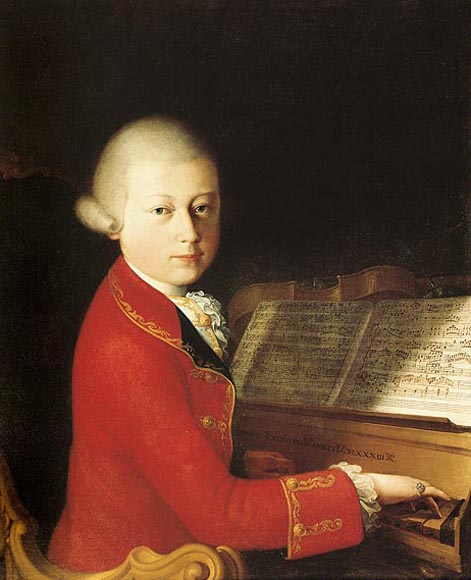Prince
Andrey Kirillovich Razumovsky was a representative for the Russian Czar that was stationed in Vienna for many years. He was also a great music patron and musician himself. He commissioned Beethoven for three string quartets (the prince played second violin in his own in-house quartet) and asked the composer to include a Russian theme in each one. Beethoven's String Quartet No. 8 is one of the three works that came to be known as the Rasumovsky Quartets of opus 59.
Beethoven wrote all three quartets in 1806, a very busy year for him. Besides these three quartets he composed the
4th Symphony,
4th Piano Concerto,
Violin Concerto, the
32 Variations On An Original Theme, and the 'Appassionata' piano sonata. The quartets were first played in 1807 they were not received very well. The leader of the quartet that played the premiere,
Ignaz Schuppanzigh, was amazed by the quartets, and the listeners at the premiere were more than amazed. Some were confused, and some thought Beethoven was playing a joke on them. But over the years these quartets have gained in reputation. In 1855 German author
Wilhelm von Lenz wrote about these three quartets in his book
'Beethoven And His Three Styles' :
 |
| Prince Razumovsky |
"The three quartets dedicated to Count Rasoumowsky (sic) are the natural fulfillment of the promise of the symphonies and the piano sonatas, but a greater achievement, since the form of the quartet is less adapted to innovation of style than either the sonata or the symphony… the content of these quartets is as great as the content of the symphonies, only the medium is different."
The String Quartet No. 8 is in 4 movements:
I. Allegro - The movement is in sonata form and opens with two abrupt chords. These chords appear throughout the movement, sometimes in the foreground, sometimes in the background, sometimes varied in key, sometimes not. Beethoven's skill as a composer gave him the power to use very short snippets of music as building blocks for entire movements. The first theme proper appears, punctuated by rests and drama. The second theme is in contrast to the first as it is in the major and more legato, but even this theme has a certain amount of bite to it. The repeat also includes the two abrupt chords. The development section begins with the two abrupt chords, this time in the major. These two chords go through a short development after which the rest of the two themes are developed. The recapitulation is ushered in, and the themes move quickly to one last statement of the opening bars that lead to the quiet ending of this dramatic movement.
II. Molto adagio - Besides the tempo designation, Beethoven wrote this direction to the musicians:
"Si tratta questo pezzo con molto de sentimento" (This piece must be played with much feeling). Beethoven's student Carl Czerny wrote:
"The Adagio, E Major, in the second Razumovsky Quartet, occurred to him when contemplating the starry sky and thinking of the music of the spheres"
Beethoven crafted this movement so well that the music unfolds seamlessly. Czerny's comment describes the music better than I ever could.
III. Allegretto - Beethoven doesn't label this movement a scherzo. It has a few characteristics of one, but it is not a typical Beethoven scherzo. It's mood is not hurried, and somewhat disembodied. The ghostly mood is broken with the trio which is where Beethoven uses a Russian theme based on a Russian patriotic song.
Mussorgsky,
Rachmaninoff ,
Tchaikovsky, and Stravinsky also used the song in their compositions.
IV. Finale : Presto - A movement in a type of rondo form. The opening dance-like theme occurs throughout the movement with episodes interlaced. The opening theme finally ends the movement with a final appearance and a short, rapid ending.
It is hard if not impossible for us to imagine the impression these quartets made the first years of their existence. They were longer than most traditional quartets up to that time. The difficulties they made on the players, both technical and musical, made them less likely to be taken up by amateurs as many quartets before them were. All three are masterpieces in their own way. Beethoven's string quartets eventually changed the way listeners listened and players played.










